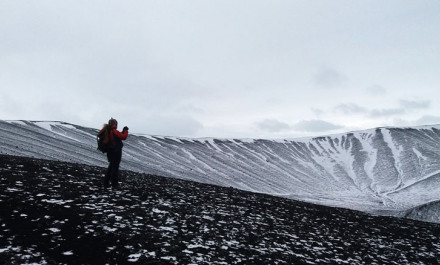- Study
- Student
- Research
- About UNAK
- University
- Schools & faculties
- Governance
- Rector
- Rector’s Office
- University Council
- University Assembly
- University Office
- Laws and regulations
- Organization
- Code of Ethics
- Councils and committees
- Strategies & policies
- On campus
- Human resource
MicroArctic

About the project
The Arctic plays a key role in Earth's climate system and is a geographical area of growing strategic importance for European policy. In the Horizon2020-funded MSC-ITN MicroArctic, the next generation of Arctic microbiology and biogeochemistry experts are trained. The project will provide these future experts with a unique understanding of the fast changing Arctic environment and the factors that impact ecosystem and organism response to the warming Arctic. They will thus be able to respond to the need for governance and leadership in various aspects related to public, policy and commercial interests.
Members
- Oddur Vilhelmsson, Professor, School of Business and Science
- Auður Sigurbjörnsdóttir, Adjunct, School of Business and Science
- Ingeborg Klarenberg, PhD-student
Collaborators
Alex Anesio, Professor at Aarhus University, Denmark (Project co-ordinator)
Ólafur S. Andrésson, Professor, University of Iceland (PhD-student‘s co-advisor)
Publications
- Klarenberg, I. J., Keuschnig, C., Warsham, D., Jónsdóttir, I. S., and Vilhelmsson, O. (2020) The total and active bacterial community of the chlorolichen Cetraria islandica and its response to long-term warming in sub-Arctic tundra. Front. Microbiol. fmicb.2020.540404. doi: /10.3389/fmicb.2020.540404
- Klarenberg, I. J., Keuschnig, C., Colmenares, A. J. R., Warsham, A. D., Jungblut, A. D., Jónsdóttir, I. S., and Vilhelmsson, O. (2021) Long-term warming effects on the microbiome and nitrogen fixation of a common moss species in sub-Arctic tundra. New Phytologist NPH17837. doi: 10.1111/nph.17837.
- Klarenberg, I. (2021) Bacterial communities of lichens and mosses and nitrogen fixation in a warming climate. PhD thesis. University of Iceland. September 2021.
- Klarenberg, I. J., Keuschnig, C., Salazar, A., Benning, L. G., Vilhelmsson, O. (2022) Moss functional traits are important drivers for moss and underlying soil bacterial communities: evidence from a chronosequence in an Icelandic glacier forefield. Preprint available at BioRxhiv doi: https://doi.org/10.1101/2022.04.13.488162